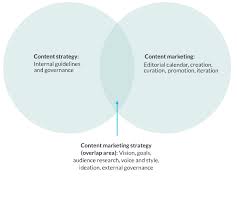SEO and SEM: Understanding the Power of Online Visibility
In today’s digital age, having a strong online presence is crucial for businesses of all sizes. Two essential strategies that can significantly impact your online visibility are Search Engine Optimization (SEO) and Search Engine Marketing (SEM). While these terms are often used interchangeably, they represent distinct approaches to driving traffic to your website and increasing your brand’s visibility in search engine results. Let’s delve into the world of SEO and SEM to understand their power and how they can benefit your business.
Search Engine Optimization (SEO) focuses on improving organic search rankings by optimizing various elements of your website. This process involves enhancing the website’s structure, content, and technical aspects to make it more search engine-friendly. The goal is to increase the website’s visibility in organic search results, thereby attracting more relevant traffic.
The key components of SEO include keyword research, on-page optimization, off-page optimization, and technical optimization. Keyword research involves identifying the terms and phrases that potential customers use when searching for products or services similar to yours. By strategically incorporating these keywords into your website’s content, meta tags, headings, and URLs, you can improve its relevance to search queries.
On-page optimization focuses on optimizing individual web pages by creating high-quality content that aligns with user intent. This includes providing valuable information, using relevant keywords naturally within the content, optimizing page titles and meta descriptions, and ensuring proper formatting for better readability.
Off-page optimization involves building high-quality backlinks from reputable websites to establish your site as an authoritative source in your industry. These backlinks signal to search engines that your website is trustworthy and relevant.
Technical optimization ensures that your website is accessible to both users and search engine crawlers. It involves optimizing site speed, improving mobile responsiveness, fixing broken links or errors, creating XML sitemaps for easier indexing, and implementing structured data markup.
On the other hand, Search Engine Marketing (SEM) refers to paid advertising efforts to increase a website’s visibility in search engine results pages (SERPs). SEM primarily involves running pay-per-click (PPC) campaigns, where advertisers bid on specific keywords and pay only when users click on their ads.
The most popular platform for SEM is Google Ads, which allows businesses to create targeted ads that appear above organic search results. These ads are displayed based on the relevance of the keywords, bid amount, and quality score. SEM provides immediate visibility and can be an effective way to drive traffic and generate leads while complementing SEO efforts.
Both SEO and SEM have their unique advantages. SEO offers long-term benefits by establishing your website’s authority and driving organic traffic. It requires consistent effort, but once your website ranks well in search results, the traffic generated is essentially free. On the other hand, SEM offers immediate visibility and control over your ad campaigns. It allows you to target specific audiences, track conversions, and adjust your strategy in real-time.
To maximize the benefits of SEO and SEM, it’s often recommended to integrate both strategies into your digital marketing efforts. By combining organic search optimization with paid advertising campaigns, you can achieve a comprehensive online presence that reaches a wider audience.
In conclusion, SEO and SEM are powerful tools for enhancing your online visibility. SEO helps improve organic rankings by optimizing various elements of your website, while SEM utilizes paid advertising to instantly boost visibility in search results. By incorporating both strategies into your digital marketing plan, you can effectively increase brand awareness, drive targeted traffic to your website, and ultimately grow your business in the competitive online landscape.
6 Essential Tips for Effective SEO and SEM Strategies
- Create content that is valuable and relevant to your target audience.
- Optimize your website for mobile devices (responsive design).
- Utilize long-tail keywords in your content and meta tags.
- Monitor changes in algorithm updates from search engines like Google and Bing.
- Include social media sharing buttons on all of your webpages to increase visibility and engagement with potential customers or clients.
- Implement a link building strategy to increase the number of quality backlinks pointing to your website from other websites in the same industry or niche as yours.
Create content that is valuable and relevant to your target audience.
Creating Valuable and Relevant Content: A Key Tip for SEO and SEM Success
In the world of digital marketing, creating content that is valuable and relevant to your target audience is a crucial tip for achieving SEO and SEM success. When it comes to optimizing your website for search engines and running effective advertising campaigns, content plays a pivotal role in attracting and engaging users. Let’s explore why creating valuable and relevant content is essential and how it can benefit your online presence.
Firstly, valuable content is the cornerstone of any successful SEO strategy. Search engines like Google prioritize websites that provide high-quality, informative, and engaging content to users. By creating valuable content that addresses the needs, questions, or pain points of your target audience, you can establish your website as an authoritative source in your industry. This not only improves your organic search rankings but also encourages users to spend more time on your site, increasing the chances of conversions.
When it comes to SEM, relevant content is equally important. Paid advertising campaigns rely on targeting specific keywords or phrases that are relevant to your business offerings. By aligning your ad copy with the keywords you bid on, you can ensure that your ads appear in front of the right audience at the right time. When users find your ads relevant to their search queries, they are more likely to click through and explore further.
Creating valuable and relevant content also helps in building brand credibility and trust. When you consistently provide helpful information or insights through blog posts, articles, videos, or other forms of content marketing, you position yourself as an expert in your field. This builds trust among your target audience who are more likely to choose your products or services over competitors.
Moreover, valuable and relevant content encourages user engagement and social sharing. When people find value in what you offer through your content, they are more likely to share it with others on social media platforms or link back to it from their own websites or blogs. This not only increases your website’s visibility but also indicates to search engines that your content is worth promoting, leading to improved organic rankings.
To create valuable and relevant content, it’s essential to understand your target audience’s needs, preferences, and pain points. Conduct thorough research to identify the topics or questions they are searching for and develop content that provides comprehensive answers or solutions. Use language that resonates with your audience, addressing their concerns in a clear and concise manner.
Remember to optimize your content for relevant keywords by incorporating them naturally throughout the text. This helps search engines understand the context of your content and improves its visibility in search results.
In conclusion, creating valuable and relevant content is a crucial tip for SEO and SEM success. By providing high-quality information that addresses the needs of your target audience, you can improve your organic search rankings, enhance user engagement, build brand credibility, and increase conversions. Invest time and effort into crafting compelling content that adds value to your audience’s lives, and you’ll reap the rewards of a strong online presence.
Optimize your website for mobile devices (responsive design).
Optimize Your Website for Mobile Devices: The Power of Responsive Design
In today’s mobile-driven world, optimizing your website for mobile devices has become a necessity. With the majority of internet users accessing websites through smartphones and tablets, having a responsive design is crucial for providing an exceptional user experience and improving your search engine rankings. Let’s explore why optimizing your website for mobile devices through responsive design is a vital tip for SEO and SEM success.
Responsive design refers to creating a website that adapts and adjusts its layout and content based on the device it is being viewed on. Whether it’s a desktop computer, smartphone, or tablet, responsive design ensures that your website looks and functions flawlessly across all devices.
There are several reasons why responsive design plays a significant role in SEO and SEM:
Improved User Experience: When users visit your website on their mobile devices, they expect a seamless browsing experience. A responsive design eliminates the need for zooming in or scrolling horizontally, making navigation intuitive and content easily accessible. By providing an excellent user experience, you increase the chances of visitors staying longer on your site and engaging with your content.
Higher Mobile Rankings: Search engines like Google prioritize mobile-friendly websites in their search results. They recognize the importance of delivering relevant and optimized content to mobile users. By implementing responsive design, you signal to search engines that your website is user-friendly across all devices, potentially boosting your rankings in mobile search results.
Increased Mobile Traffic: As more people rely on their smartphones to browse the internet, having a mobile-friendly website becomes crucial for attracting organic traffic from mobile searches. When users find your site easily navigable and visually appealing on their phones, they are more likely to stay longer, explore further, and convert into customers or leads.
Consistency Across Devices: With responsive design, you ensure that your brand identity remains consistent across different devices. Whether someone visits your site from their desktop or smartphone, they will encounter a consistent design, branding elements, and user interface. This consistency builds trust and reinforces your brand’s credibility.
Cost and Time Efficiency: Having a separate mobile version of your website can be costly and time-consuming to develop and maintain. Responsive design eliminates the need for multiple versions by automatically adjusting the layout based on the screen size. This saves valuable resources while ensuring a consistent user experience.
To optimize your website for mobile devices using responsive design, consider the following tips:
Use a responsive website template or hire a professional web designer who specializes in responsive design.
Ensure that all elements on your site, including images, text, buttons, and forms, are optimized for mobile viewing.
Test your website across various devices to ensure it looks and functions correctly on each one.
Optimize page load times by minimizing file sizes and leveraging browser caching techniques.
Regularly monitor your site’s performance on mobile devices using analytics tools to identify areas for improvement.
By implementing responsive design and optimizing your website for mobile devices, you create a seamless user experience that drives organic traffic, improves search engine rankings, and enhances overall online visibility. Stay ahead of the competition by embracing this essential tip for SEO and SEM success in the mobile era.
Utilize long-tail keywords in your content and meta tags.
Utilizing Long-Tail Keywords: Boosting Your SEO and SEM Success
When it comes to optimizing your website for search engines, one crucial tip that can significantly impact your SEO and SEM efforts is to incorporate long-tail keywords into your content and meta tags. Long-tail keywords are longer, more specific phrases that users often search for when looking for a particular product, service, or information. By strategically incorporating these keywords into your website’s content and meta tags, you can improve your online visibility and attract more targeted traffic.
Long-tail keywords offer several advantages over generic, short keywords. Firstly, they have lower competition since they are more specific. This means that by targeting long-tail keywords, you have a better chance of ranking higher in search engine results pages (SERPs). Additionally, long-tail keywords tend to attract users who are further along in their buyer’s journey and have a clearer intent. By targeting these specific phrases, you can reach an audience that is more likely to convert into customers.
To effectively utilize long-tail keywords in your SEO and SEM strategy, consider the following tips:
- Thorough Keyword Research: Conduct comprehensive keyword research to identify relevant long-tail keywords related to your business or industry. Tools like Google Keyword Planner or third-party keyword research tools can help you discover popular long-tail phrases with reasonable search volume.
- Content Optimization: Once you have identified the most suitable long-tail keywords, incorporate them naturally into your website’s content. Create high-quality blog posts, articles, or landing pages that provide valuable information while seamlessly integrating these targeted phrases. Remember to maintain a balance between optimization and readability.
- Meta Tags Optimization: Optimize your meta tags – including the title tag and meta description – with relevant long-tail keywords. These elements appear in search engine results and play a crucial role in attracting users’ attention and encouraging them to click on your link.
- Focus on User Intent: Long-tail keywords often reflect specific user intent. Understand the needs and pain points of your target audience, and create content that addresses their queries or solves their problems. By aligning your content with user intent, you can provide a more valuable and engaging experience for your visitors.
- Monitor and Adjust: Regularly monitor the performance of your long-tail keywords using analytics tools. Analyze which keywords are driving the most traffic, engagement, and conversions. Based on these insights, make necessary adjustments to your SEO and SEM strategies to optimize results continually.
Incorporating long-tail keywords into your website’s content and meta tags is a powerful way to improve your SEO and SEM success. By targeting specific phrases that align with user intent, you can attract more relevant traffic, increase conversions, and ultimately enhance your online visibility. Remember to conduct thorough keyword research, optimize your content and meta tags accordingly, prioritize user intent, and regularly monitor performance for ongoing optimization. Embrace the power of long-tail keywords to take your online presence to new heights!
Monitor changes in algorithm updates from search engines like Google and Bing.
Staying Ahead: Monitoring Algorithm Updates for SEO and SEM Success
In the ever-evolving world of search engine optimization (SEO) and search engine marketing (SEM), keeping up with algorithm updates is crucial to maintaining a competitive edge. Search engines like Google and Bing frequently update their algorithms to improve the quality of search results, which can significantly impact your website’s visibility and rankings. By monitoring these changes and adapting your strategies accordingly, you can stay ahead of the curve and maximize your SEO and SEM efforts.
Search engine algorithms are complex formulas that determine how websites are ranked in search results. They consider various factors such as relevance, user experience, backlinks, content quality, and more. When search engines release algorithm updates, they aim to enhance user experience by delivering more accurate, relevant, and trustworthy results.
To effectively monitor algorithm updates, it is essential to stay informed about industry news, follow reputable SEO blogs or forums, and keep an eye on official announcements from search engines themselves. Industry experts often analyze algorithm changes and share insights on how they might impact SEO practices.
When an algorithm update occurs, it’s vital to evaluate its potential impact on your website’s rankings. Some updates may require minor adjustments to your existing SEO strategies, while others may demand a more significant overhaul. For instance, an update might prioritize mobile-friendly websites or penalize those with low-quality content or spammy backlinks.
Once you identify the changes brought about by an algorithm update, take proactive steps to align your SEO and SEM efforts accordingly. Here are a few tips:
- Stay Updated: Continuously monitor industry news sources for information on algorithm updates. Follow reputable SEO blogs or forums where experts discuss the latest trends and best practices.
- Analyze Impact: Assess how the algorithm update affects your website’s performance in terms of rankings, traffic volume, conversions, or other relevant metrics.
- Review Guidelines: Study updated guidelines provided by search engines like Google or Bing. These guidelines often offer insights into what search engines value and can help you align your strategies accordingly.
- Optimize Content: Ensure your website’s content is high-quality, relevant, and valuable to users. Focus on providing a seamless user experience across devices and consider optimizing for mobile devices if necessary.
- Build Quality Backlinks: Emphasize building high-quality backlinks from reputable websites to enhance your website’s authority and credibility.
- Adapt PPC Campaigns: If you run pay-per-click (PPC) campaigns, review and adjust your targeting, keywords, ad copy, and landing pages to align with the algorithm changes.
By monitoring algorithm updates and adapting your SEO and SEM strategies accordingly, you can maintain a strong online presence and improve your website’s visibility in search engine results. Remember that SEO is an ongoing process, and staying informed about algorithm updates is essential for long-term success.
In conclusion, keeping a close eye on algorithm updates from search engines like Google and Bing is crucial for effective SEO and SEM practices. By staying informed, analyzing the impact of updates on your website’s performance, reviewing guidelines, optimizing content, building quality backlinks, and adapting PPC campaigns when necessary, you can stay ahead of the curve in the ever-changing digital landscape.
Include social media sharing buttons on all of your webpages to increase visibility and engagement with potential customers or clients.
Boost Your Online Visibility and Engagement with Social Media Sharing Buttons
In today’s digital era, social media plays a significant role in connecting businesses with their target audience. To maximize your online visibility and engage potential customers or clients, it is crucial to incorporate social media sharing buttons on all your webpages. This simple tip can have a profound impact on your SEO and SEM efforts.
Social media sharing buttons allow visitors to easily share your content across various social media platforms with just a single click. By implementing these buttons strategically throughout your website, you enable users to amplify your brand’s reach by sharing your content with their own networks.
Here are a few reasons why including social media sharing buttons can benefit your business:
Increased Visibility: When visitors share your content on social media platforms, it exposes your brand to new audiences who may not have discovered you otherwise. This increased visibility can lead to more website traffic, improved brand recognition, and potentially new customers or clients.
Enhanced Engagement: Social media sharing buttons encourage users to engage with your content by liking, commenting, or sharing it. This engagement not only helps build a sense of community around your brand but also signals to search engines that people find value in what you offer. Search engines often consider user engagement as an important factor when determining search rankings.
Improved SEO: Social signals, such as the number of likes, shares, and comments on social media platforms, can indirectly impact your search engine rankings. When users engage with your content through social media sharing buttons, it sends positive signals to search engines about the quality and relevance of your website.
Widened Reach: By allowing visitors to share your content effortlessly, you tap into the power of word-of-mouth marketing. When people share something they find interesting or valuable, it can quickly spread across social networks and reach a wider audience beyond your immediate reach.
To make the most of social media sharing buttons:
Choose the Right Placement: Position the buttons prominently on your webpages, preferably near the top or bottom of the content. This ensures they are easily noticeable and accessible to users.
Optimize Button Design: Customize the buttons to align with your brand’s visual identity. Use recognizable icons for popular social media platforms, and consider using contrasting colors that catch users’ attention.
Prioritize Relevant Platforms: Focus on including sharing buttons for social media platforms that align with your target audience’s preferences and behaviors. Consider popular options like Facebook, Twitter, LinkedIn, Pinterest, or Instagram.
Monitor and Analyze: Regularly monitor the performance of your social media sharing buttons using analytics tools. Track shares, clicks, and engagement metrics to gain insights into what content resonates most with your audience.
Remember, social media sharing buttons are not just a means of increasing visibility; they also foster a sense of community around your brand by encouraging user interaction and amplifying your reach. By incorporating this simple tip into your SEO and SEM strategy, you can enhance engagement, drive traffic to your website, and ultimately grow your business in the digital landscape.
Implement a link building strategy to increase the number of quality backlinks pointing to your website from other websites in the same industry or niche as yours.
Implementing a Link Building Strategy to Boost Your SEO and SEM Efforts
In the world of digital marketing, having a strong online presence is essential for businesses looking to thrive and succeed. One effective technique to enhance your Search Engine Optimization (SEO) and Search Engine Marketing (SEM) efforts is by implementing a link building strategy. This strategy focuses on increasing the number of quality backlinks pointing to your website from other websites in the same industry or niche as yours.
Backlinks are like votes of confidence from other websites, indicating that your content is valuable and trustworthy. Search engines consider these backlinks as a signal of credibility, which can positively impact your website’s ranking in search results. Here’s why implementing a link building strategy is crucial for your SEO and SEM success:
- Improved Organic Rankings: Quality backlinks from authoritative websites can significantly improve your website’s organic rankings. When search engines see that reputable sites are linking to yours, they perceive it as a sign that your content is relevant and valuable to users. This can result in higher visibility in search engine results pages (SERPs), driving more organic traffic to your site.
- Increased Website Authority: Backlinks act as endorsements for your website’s authority within your industry or niche. When other reputable websites link to yours, it demonstrates that you have valuable insights or information worth sharing. This helps build trust among both search engines and users, establishing you as an expert in your field.
- Targeted Traffic Generation: Link building allows you to gain exposure among audiences who are already interested in products or services similar to yours. By obtaining backlinks from relevant websites within your industry, you increase the chances of attracting targeted traffic that is more likely to convert into customers or clients.
- Enhanced Brand Awareness: As you secure backlinks from various sources, it expands the reach of your brand across different platforms and websites. This exposure not only drives traffic but also increases brand awareness. When users repeatedly encounter your brand through backlinks, they become more familiar with your business and are more likely to engage with your content or make a purchase.
When implementing a link building strategy, it’s crucial to focus on obtaining quality backlinks rather than quantity. Quality backlinks come from reputable websites that have high domain authority and are relevant to your industry or niche. Building relationships with other website owners or bloggers within your niche can help you secure valuable backlinks through guest posting, collaboration, or resource sharing.
Remember that link building is an ongoing process that requires consistent effort. Regularly monitor the quality of your existing backlinks, identify new link-building opportunities, and ensure that your content remains valuable and shareable.
In conclusion, implementing a link building strategy is a vital component of your SEO and SEM efforts. By acquiring quality backlinks from relevant and authoritative websites within your industry, you can improve organic rankings, increase website authority, generate targeted traffic, and enhance brand awareness. Invest time and effort into building relationships with other website owners and consistently seek out opportunities to secure valuable backlinks. With an effective link building strategy in place, you can boost the success of your online presence and drive sustainable growth for your business.




